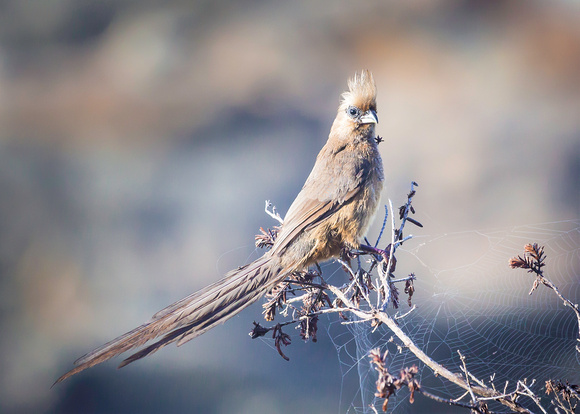Awaiting the Spider - Speckled mousebird
Speckled mousebird (Colius striatus)
14 inches long
The largest species of mousebird, as well as one of the most common. It gets its name from its dull-mousy brown overall color on the back and on the head and from its habit of creeping about in trees and bushes, resembling mice.
It is distributed from Cameroon east to Eritrea and Ethiopia, south through eastern Africa to southern South Africa. Most habitats are suitable for this species, except the rainforests and more arid areas. This mousebird prefers open bushveld habitats. It is widespread in savanna and open woodlands, as well as areas with tangled thickets. It is a common "backyard bird," often seen in urban areas that contain gardens and orchards.
Subsists on fruits, berries, leaves, seeds and nectar, and is fairly catholic in its choice of food from area to area.
The nest is a large (for the bird) and untidy cup made of vegetable and animal material (sometimes including cloth and paper) and is constructed by both the male and female. Clutch size ranges from one to seven eggs (apparently based on latitude), but usually averages 3–4. Nestlings are fed by both parents and also by helpers, which usually are juveniles from previous clutches.
Photographed on the Otter Trail, Storms River Mouth, Eastern Cape, South Africa.


